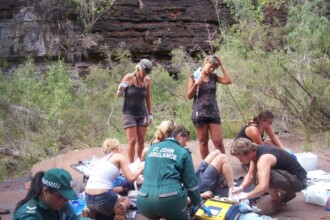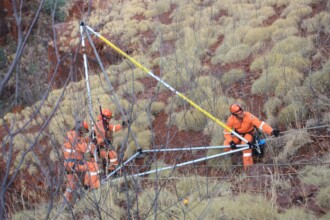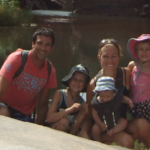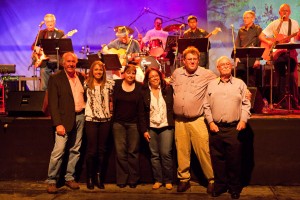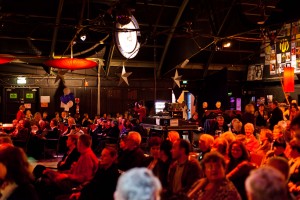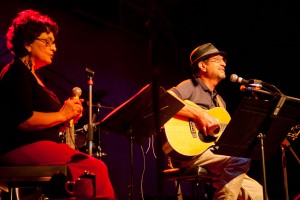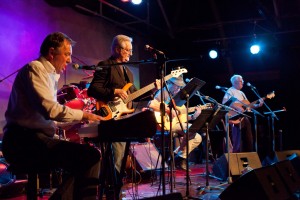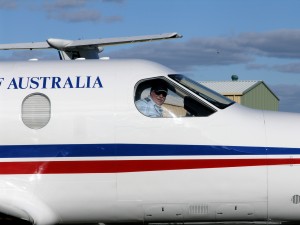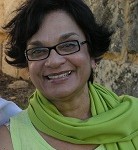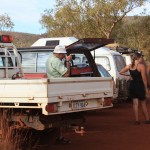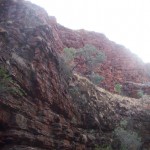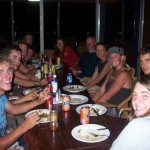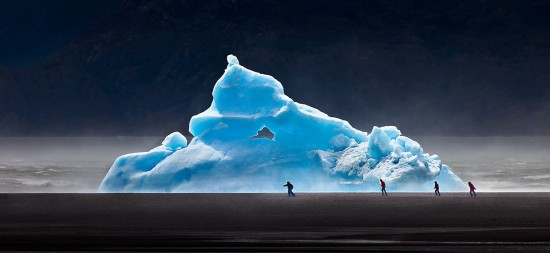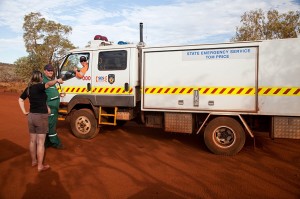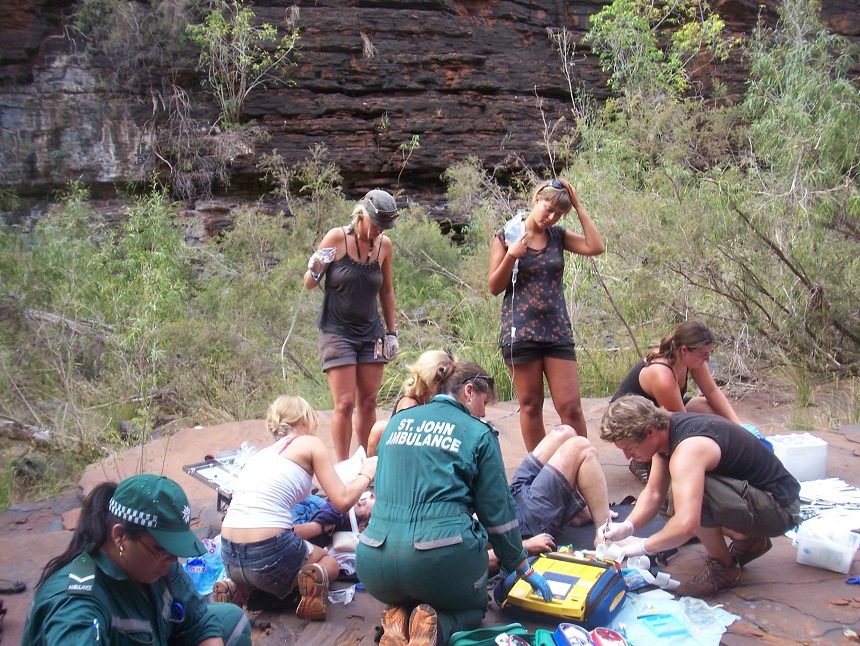The Accident
Karijini Accident – An Extra-Ordinary Day
Simone Milligan, the nurse who was significant in helping Nick survive the first few hours has written her compelling story. Below is just a synopsis of her fascinating story, how she took control while waiting for a doctor to arrive – but in the event, she had to wait a long time.Her story begins….”
My family had set off from Melbourne 3 months earlier to travel around Oz. Being a qualified registered nurse I had put togeher a comprehensive first aid kit which included an intravenous kit.
We Were Prepared For Snake Bites
Travelling remote at times I wanted to be as prepared as I could be for an emergency, especially travelling with our young children,
Read moreAbout Chords for Angels
April 2010 : Nick Melidonis, a multi-award winning landscape photographer, was filming in Western Australia’s Karijini National Park– Knox Gorge.In a particularly slippery section of Knox Gorge he slipped and fell while passing a tripod to his friend. He should not have survived the next 48 hours but the support of many ‘Angels’ combined to save his life. The ‘Angels’ included skilful medically trained tourists, teenage holidaymakers, volunteers from The State Emergency Services, The St. John Ambulance Service, The Royal Flying Doctor Services and eventually, the emergency ward team at St. John of God Hospital, Murdoch.
Nick is back to health and good spirits and has rekindled his passion for live music performances. With his friends he created a musical dedication to his rescuers. Hence the title “Chords for Angels”. Two new songs were created by musicians and writers Nigel Shaw and Garry Baverstock. “Chords for Angels” and “State of Emergency”. CDs can be ordered through the contact page for $10 each.
Read moreContact Us
 We had a fabulous concert on 14th August 2011 at
We had a fabulous concert on 14th August 2011 at
The Fly by Night Musician’s Club
Fremantle Australia
There were over 220 people
11 musicians, 2 cameramen, 2 photographers
We will have professional DVDs available but if you want the real thing, you will have to wait for the next one
Please Join Our Mailing List
Welcome to our mailing list. Please CLICK HERE to contact us and be kept up-to-date for the next concert. We had so much fun we have to do it again next year?
Keep the Royal Flying Doctor in our skies. Your tax deductible donation will help them continue to save lives. Click their logo below to be taken straight there. You can keep donating. They keep needing our help.
Read moreChords for Angels Concert 2011
What a night it was!
See a 3 minute clip of the concert here: CHORDS FOR ANGELS AT THE FLY BY NIGHT
Chords for Angels concert 2011: A musical thank you to the amazing volunteers who helped save Nick Melidonis after his life-threatening fall in Karijini National Park.
Amongst the 250 audience were some of the ‘Angels’ who had flown in from different parts of Australia for the event – including Cliff Winfield, Simone Milligan, Nicole Kelly, Kardeen Black, Michael Napier and Barry Hallett. In addition to the public acknowledgements to the Angels, Chords for Angels Concert 2011 raised $6,675 for the three rescue services involved.
The atmosphere was fantastic. The music was as promised – a range of folk, jazz and rock. The last bracket had everyone rocking in the aisles.
Two new songs, crafted specially for the event, were performed in dedication to the Angels, who received a rousing applause from the audience. CDs of the two songs, produced by RodMusic, were sold to add to the ticket proceeds.
Please order CDs ‘CHORDS FOR ANGELS” and ‘STATE OF EMERGENCY‘ through the contact page ( $10 each +p&p)
Chords for Angels Musicians
Chords for Angels Musicians: Nick Melidonis, Anne Rowe, Keith MacDonald, Tim Strahan, Nigel Shaw with Garry Baverstock and his band ‘Anugaia’, and Rod Christian, presented a foot tapping concert with a fusion of sounds from favourite 1960s to 1980s covers and original music created for this event.
During the concert two fabulous songs ‘Chords for Angels’ and ‘State of Emergency’ created by Nigel Shaw and Garry Baverstock, were aired live for the first time. You can buy the new CD produced by RodMusic through the contact page. Each CD has the 2 new songs.
Air Rescue: Barry Hallett RFDS Pilot
During the evening of 29April 2010 I was tasked by my company, Royal Flying Doctor Service (RFDS) Western Operations, to pilot an aircraft with a medical team from Jandakot airport to Paraburdoo airport, in northern Western Australia. We were to retrieve a man who had fallen off a ledge at Karijini National Park and had been seriously injured.
My Part in Nick’s Rescue
Preparation for the Flight RFDS Style
The aircraft arrived at Paraburdoo around midnight. While the plane was refueled, the patient was examined by the medical team and loaded onto the aircraft for the flight to Jandakot Airport, the location of the RFDS base in Perth. He would then be transferred by road to hospital.
Flying At Sea Level
The flight to Paraburdoo was uneventful and the patient transfer was routine. However on the returning flight there were two main aviation considerations. Firstly the medical requirement meant that we had to have a sea level cabin environment due to the patient’s injuries. A sea level cabin means that the aircraft is restricted in altitude to ensure the atmospheric pressure of the cabin is the same as would be experienced by a person standing on the seashore. This means the flight time is slightly slower.
Forecast: Fog
The other consideration was that the Department of Meteorology had forecast a 30% probability of fog at Jandakot and Perth from about 0400 hours.
Waiting For Weather To Clear
We departed Paraburdoo around 0130 hours. As we passed Meekathara, I asked for an update on the forecast for both Perth and Jandakot. It wasn’t all that good so I suggested that we should divert from Mount Magnet to Kalgoolie and wait for the weather to improve.
Time Pressure
It was decided that we should at least attempt a landing at Perth as we wanted to get the patient to hospital as quickly as we could, however we had enough fuel on board in case a diversion was required.
Couldn’t Land at Cunderdin
Meanwhile I also obtained forecasts for Cunderdin and Southern Cross. A landing at Cunderdin, would mean the patient and medical team could be roaded to Perth. The forecast at Cunderdin was for good conditions.
As it eventuated we were not able to land at Perth but had sufficient fuel to attempt a landing at Cunderdin, but unfortunately Cunderdin was also in heavy fog, so we continued on.
Diversion to Southern Cross
I could see Southern Cross about 10 miles west so we landed and waited for about 90 minutes, making many calls to Perth for weather updates in the interim.
Final Destination Perth
Once it was certain that the weather was beginning to improve we got airborne, arriving in Jandakot at 0900 hours.
It turned out to be a long night!
Note: Barry is a pilot recently retired after more than 30 year’s with Royal Flying Doctor Service. We were able to contact Barry just in time for him to join us for the Chords for Angels Concert.
Barry’s expert piloting was yet another important link in the story of the rescue, following the many hours of support and medical assistance Nick received from tourist volunteers, St. John Ambulance volunteers and State Emergency Services volunteer group at Tom Price. The airports being fogged in was an unexpected extra drama.
Emergency Services Medal to Steve Cable
Steve Cable is a man who stands out for his volunteer work with the State Emergency Services over the past 35 years.
In 2000 Steve received the inaugural Emergency Services Medal – Queen’s Birthday Honours Awards for his SES service to the community. Steve was particularly singled out for his recovery work with the Exmouth township after Cyclone Vance.
In 2010 Steve was a finalist in the SES’s highest honour in Western Australia – “The Peter Keillor Award.”
The SES Peter Keilor Award is presented each year to an SES volunteer who has gone beyond the call of duty in demonstrating a high level of dedication and commitment to the SES.
Steve has dedicated over 35 years to service in Volunteer work, from the Bush Fire Brigade in the 60’s followed by 10 years as an Ambulance Officer in the Exmouth Volunteer Ambulance Service in the 70’s and then to 20 years service in SES Karratha.
Peter Keillor is recognised for his work with Murray State Emergency Services at a time when the Unit was struggling to become fully operational. Although the Unit had no radio sets at that time, he was appointed Communications Officer in 1982 and later qualified as a Communications Instructor.
Although confined to a wheelchair, Peter never allowed his disability prevent him from achieving excellence. He was appointed Co-Ordinator of the Murray Unit in 1990.
Chords for Angels musician, the beautiful singer Anne Rowe is particularly proud of her brother-in-law Steve, who has spent the past five years as Volunteer Training Officer for SES Kalbarri.
Karijini National Park Accident – Cliff’s Story
What happened at Karijini that day….
The story from Cliff Winfield, former Regional Manager of Department of Environment and Conservation, Pilbara (managers of Karijini National Park)
Hi, This is Cliff,
People have asked me to pen my thoughts about what happened at the Karijini National Park accident nearly a year ago.
Although photography is not my profession, I consider myself to be adept at it. Over the years my work has been published by many high profile journals including Time-Life, Readers Digest, Australian Geographic and Landscope. In particular – over twenty or so years I’d had a number of articles published on the amazing “Ever-changing light” of the gorges of Karijini national park. After retiring from DEC, at the suggestion of a mutual friend, I partnered with Nick Melidonis, landscape photographer, to show him some of my favourite places in the park, and of course, add photos to our folios.

We flew into Paraburdoo late in the afternoon, took in the fantastic view of the ranges from Mt Nameless, overnighting in Tom Price. Next day we travelled to Karijini and checked into the Ecoretreat – a nature-based resort within the national park. We walked into what I call the beginners gorge – Circular Pool and along the gorge floor to Fortescue Falls and Fern Pool.
Spider Walking
The next morning, after photographing the full moon setting, we climbed down into Hancock Gorge and Nick was excited about what he was seeing. In Hancock Gorge, there comes a point where you
either have to swim, or, against advice of park managers, “spider walk” rock ledges to get to the next level of spectacular pools. Nick had stressed to me a number of times that he didn’t want to take risks as he had a tour to Greece to lead in few weeks time. In my days as a park manager I had seen so many injury reports of Karijini National Park accident falls in Hancock Gorge – so I was not going to condone “spider walking”. We didn’t have waterproof bags for our gear with us so we stopped there, meanwhile three tours climbed the rocks around the water, we prudently didn’t disobey the signs, and turned back there, planning to return the next day with waterproof bags. Point being – we were not prepared to take unnecessary risks.

Knox Gorge
I was aware that some areas of Knox Gorge were equally spectacular, and relatively more accessible, so after lunch – about 1pm, we were heading down the walk trail into Knox Gorge – about three hundred metres deep, steep, some scree slopes, but relatively easy. We got to the last five metres, where two hands are required to get down some large tricky rocks. I was leading, and had negotiated the tricky bit. Nick passed me his tripod and I turned to go on, and next I heard crashing of sticks to my side and saw him falling through a rock fig and land face down spreadeagled on the floor of the gorge – about seven metres from head height.
The Fall
In the seconds it took me to get to him he was surrounded in a half metre radius of his head with a pool of blood. My first reaction was that he was dead, but he then started groan. I had heard voices not far away and yelled for help, soon two young Germans ran to me, and yelled for some companions to come. I rolled Nick into the recovery position, he was having trouble breathing, and his nose was smashed. I cleaned the teeth and bone from his mouth. Nick was conscious, and I asked him if he could move his fingers, then arms, then legs, then head, which he did. He complained of a sore chest. He was in the sun, and the rocks were almost too hot to touch, so I chose to move him to the shade. This was all in a minute or so. I assessed the situation, and asked the fittest looking backpacker (Michael) to go to EcoRetreat for help, saying to report that Nick had fallen five metres onto his face, had at least severe facial injuries, possible rib injury, and that I thought he’d have to be lifted out. Mean time the three other backpackers had assumed first aid roles, cleaning him up and reassuring Nick.
Karijini Accident – Volunteer Tourists Spring to Action
Michael didn’t know where EcoRetreat was, but knew where the Visitor Centre was (about 10km further) so I sent him there. At the Knox car park he met another couple, Aussies in their fifties (who I now know to be Yvonne and Allen Deans), Yvonne guided him to EcoRetreat, and Allen came down the gorge with ice, water and towels. After about ten minutes, I was confident Nick was in as good a situation as he could be, and I decided to go to the top of the gorge to meet the help, and provide an update on his condition. I then decided to head towards Ecoretreat myself, in case Michael had got lost. After a few hundred metres I met Fiona – who I knew to be manager of EcoRetreat and Michael – coming the other way. Yvonne’s story Karijini Accident is on the blog section.
Tom Price Emergency Services
We talked and confirmed the situation, she had called Park Ranger Lenny who was nearby and on his way. The nearest outside help was Tom Price, some 100 km away (Tom Price Police, St John’s and SES rescue volunteers). We went back to the car park; Fiona, who now has done this many times, assumed a role of Coordinator/operation radio base at the car park, while I went back down the gorge. Nick’s condition had deteriorated somewhat, his face was very swollen, he had trouble breathing and not taking water easily, and was still losing blood from his mouth. But on the other hand, the helpers were keeping him conscious and reassuring him. Lenny arrived soon afterwards, with a radio – communications remain a problem in gorges. Mobile phones, sat phones and most two-way radio doesn’t work in the gorges.
By now I was anxious that the ambulance seemed to be taking a long time, so I went back up to the car park. Fiona was turning away tourists entering the gorge, but one identified herself as a nurse – Simone.
A Saline Drip in the Backpack
Simone came to Nick complete with amazing reassuring emergency bedside manner, and proper first aid kit including saline drip to replace the blood he’d lost. Sometime later, the ambulance officers arrived, and assumed control of the situation. They told me I was required to give a statement to their officer in the car park, by now I was a bit ragged, and Yvonne accompanied me back up out of the gorge. On the way up we met another person on the way down – a young back-packer doctor. It turns out that the Ambulance people had assessed me as being stressed and shocked, and that they were actually sending me up for a rest and oxygen in the ambulance which I did for about half an hour. We found Nick’s partner’s phone number on his phone, and called on the St John’s sat phone, got an answering machine and left a message. By now I was out of the direct communication links, but the St John’s driver Tiny, was in contact with the people in the gorge and told me they were calling for Nick to be winched out (which I knew all along, but given the number of false emergencies I can understand that pushing the SES rescue button is only done after Ambo confirmation). Tiny also said what I already knew, that this would go on for hours, and suggested I should go and get cleaned up, and try ringing Nick’s partner again. Which I did. I also overheard that they feared he might have more severe injuries.
A Human Bridge – Hand over Hand
Concerned that he might have spinal or head injuries, Nick was moved, strapped in a frame on a human bridge – hand over hand for several hundred metres along the gorge floor to apoint where he could be winched up the side of the gorge – a sheer face of 100 or so metres. At about 8pm after an amazing amalgam of SES and St John’s expertise and dedication and pulling muscle from youthful and committed park users, Nick was gently eased up the face of the gorge. St Johns’ Ambulance took him to Tom Price, then after examination Flying Doctor to Perth.
Fiona put on meal and drinks for the volunteers at Ecoretreat.
St. John of God Hospital
Nick went into intensive care unit of St. John of God Hospital, Murdoch, where they found only facial injuries. He has since had seven plates put in his face. Consensus is, if he’d had his head turned a centimetre either way, he would have hit his temple and probably not survived, his face took all the impact. When I spoke to him recently, firstly he has deep gratitude to all involved, and he’s very positive about life from here on in – his number wasn’t up. He has no clear recollection of what happened, he thinks he may have over reacted when a rock moved under his feet.
The Camera Survived the Fall
Next day, with Nick gone out on the plane, there wasn’t much I could do, and I still had all his gear with me. Remarkably, his Canon 5D had also survived this particular Karijini National Park accident. I was shaky, but decided that I had to “get back on the horse that bucked me” so I stuck to our planned itinerary, and went into Hamersley Gorge with both of our cameras and spent the day photographing.
On what could be done differently……
I don’t think we did anything wrong, or would have done anything differently, s… still happens in Karijini. I think the track classification system is appropriate, Nick and I were in reasonable shape, I’m not an advocate of signs and structures to protect people from themselves. But on some of these rocky platforms with potential 5+ metre falls, if you have a youthful inattentive moment, or a senior moment, or you’re just plain unlucky, the consequences are dire.
Life Can Change in a Split Second
I had a number of texts and e-mails from the people who stayed with Nick in the first hours. Three have said they still spend a lot of time thinking about the events of that day
As do I
Please click the link to book your tickets for the CHORDS FOR ANGELS concert Sunday 14th August 2011 and acknowledge the terrific work of the emergency crews and volunteers who stepped in to save Nick at the site of his Karijini National park accident.
Professional Photography Awards 2011
Professional Photography Awards 2011 Nick Melidonis Wins Gold
This dramatic image of hikers battling gale force winds in Patagonia against a backdrop of a stranded iceberg, won gold.
At the recent Australian Professional Photography Awards held in Sydney June , 2011 Nick was runner up for the AIPP ‘Australian Travel Photographer of the Year’.
Karijini Accident
Yvonne Deans describes The Karijini Accident
Last Thursday, 29th April, 2010, what started out as a day of gorging on gorges in the Karijini National Park ended more dramatically than we could ever have imagined. This turned out to be a day we will never forget.
My husband Allen and I saw and explored the spectacular gorges of Weano and Hancock; and after lunch went on to Knox gorge, our last for the day.
Call For Help
We had just started descending the rough, scree-filled, rocky, steep path when Michael, a young German, appeared from below, running with no regard for anything but speed. He shouted that there had been an accident and he was going to get help from the Resort/Campground, some 10 km. away.
He said that a 50 year old man had fallen 5 metres to the rock floor of the gorge and that his face was completely smashed in. We returned to the car and got our first aid kit and then hurried down to the bottom. The sight was horrific and his description was not exaggerated.
Back-Packers First On The Scene
How the man was not dead is something we still wonder at. Michael had gone down the gorge with Cliff and four young backpackers, Michael, Helie, Jules and Anouk, had managed to carry him across to a rock ledge so that he was in a bit of shade. Helie had his head in her lap and stayed there with him like that until he was moved some hours later. His jaw, mouth and nose were completely smashed and a mass of blood; his teeth were gone, there was blood over his shirt but he was able to move his legs. He could breathe through his mouth and that was only with difficulty because of the blood.
Hold On Nick – Stay Awake
We now knew the man’s name was Nick. I took his photographer friend Cliff back to the top to await help and Allen spent the next hour and a half with Nick, feeling the weight of responsibility as the oldest one there and aware that if Nick stopped breathing or had a heart attack he would have to put his far from recent first aid training into practice. Allen helped Nick to sip water and somehow spit out blood to keep the airwaves open. Everyone there talked to Nick to keep him alert and to gauge how he was going. The backpackers were fantastic, comforting Nick, mopping up blood and keeping the flies away.
Allen joked to Nick about how lucky he was to have three beautiful girls cradling his head, mopping his brow and holding his hand.
Simone Brings Emergency Experience
At the top of the gorge, tourists arrived unaware of the drama below. One of them was Simone Milligan from Melbourne who we’d met at Ningaloo Reef and who turned out to be an emergency nurse. I took Simone down to where Nick was, enabling Allen, to his relief, to assume the role of helper.
Simone did an amazing job. As soon as she arrived with her first aid kit, she took control comforting and reassuring Nick and getting the helpers to get Nick into a better position, putting a drip in and clearing the blood from his nose. She appeared confident, comfortable and in charge. It was only the next day that she revealed to Allen and me how nervous she had been.
Fiona Directs Communications
I went back to the top where Fiona Gordon, Manager of the nearby Eco Retreat was competently managing the communications between the State Emergency Services (‘SES’), National Park Services and the St. John’s Ambulance.
Another tourist arrived – Marc Stoffel a singleted backpacker who turned out to be a doctor from Germany. At Fiona’s request, I took him down to the accident scene.
St. John’s Ambulance Arrives
The ambulance arrived from Tom Price. But instead of bringing relief to Dr. Marc and Nurse Simone it brought the revelation that the three people making up the St. John’s Ambulance team were the Tom Price High School Deputy principal, a clerk and a boilermaker. The ambos were volunteers. They were first aiders. Simone and Marc ended up attending to Nick the whole time until he left in the ambulance several hours later.
During the early part of the afternoon Allen and I went up and down the gorge three times each; taking people and supplies, including resuscitation equipment, up and down.
State Emergency Services Prepare The Rescue
I eventually stayed up the top and watched the rescue by the SES teams from Tom Price and Newman. Allen stayed down the bottom of the gorge with the ambos and the Karijini Parks Ranger Lenny and others, and helped carry Nick on a stretcher to the point where he would be winched 80 metres up to the top of the gorge. Allen said it was only 150 metres from the accident scene to the lift point but it took about 45 minutes to move Nick that distance because of the rough terrain, the slippery rocks in the river, overhanging trees, and not least, the falling night.
At the top, I had been appointed by the SES as the scribe and had to write everything down that was said by the rescue team (“except the swearing” they said – “leave out the swearing!”). I had a perfect view of the whole lift operation, watching the construction of the winching frame (the Larkin frame), the lowering of the 95+ kilo rescuer ‘Tiny‘ who was followed by a young female rescuer who was a first aider and whose role was to apply first aid to Nick on the way up. The ‘mules’ (i.e. the backpackers and the SES) hauled on the ropes to winch Nick and the two rescuers back up. There was a lot of shouting, commands, “stop”, “start”, “slow down”, “re-set”. The air was filled with tension.
Night Fall
At 7.02pm (by my notes!) in complete darkness and after over 6 hours without any pain relief, Nick was at the top of the cliff and the “mules” hand-over-handed the stretcher to the ambulance in the car park and he was taken to Tom Price and then flown to Perth by the Royal Flying Doctor Service.
Tribute To The BackPacker Rescuers
Fiona generously offered us a meal and a bed for the night at the Eco Retreat. We went back and shared a meal with 8 of the travellers who had assisted in one way or another. Afterwards Allen and I decided to drive the 40 km home to our own bed. Helie who had cradled Nick’s head in her lap throughout the afternoon went into shock and did not join us at dinner. At dinner where we were clearly old enough to be everyone’s parents, Allen praised the backpackers for their actions and I took all their email addresses although Allen really wants to write to their mothers to tell them how proud they should be of their children. (He did write that email after we got home).
The Aftermath
The events of the day were very emotional as well as physical, and have stayed with us very strongly. We are left a little empty – the accident happened, we helped, we went home and that was it. One week later, we have no idea how Nick is, we don’t know how the other travellers are going, or Nick’s mate, Cliff.
We wonder about the young people, especially Helie and the nurse, Simone. We are fortunate that we went through this experience together and so can talk about it again and again – and we have.
Written by Angel : Yvonne Deans
What is Chords for Angels?
Chords for Angels is a celebration in the style of a concert of folk, rock and jazz styles of music from the 60s to the 80s. The sounds are up-tempo and popular covers that have your feet tapping.
The first concert was held Sunday, 14th August 2011 at The Fly by Night Musicians Club, Fremantle.
The Chords for Angels event acknowledges the tremendous work of The Western Australian State Emergency Services, The Royal Flying Doctor Service, St. John’s Ambulance, the hospital emergency departments and the many volunteers who every day show extraordinary kindness and courage to help others in distress or danger.
Chords for Angels our way to say “thank you” and celebrate the work of the rescue teams that helped Nick Melidonis last year when he met with a horrific accident in Karijini National Park.
Nick is a musician and a landscape photographer. He called on his musician friends Garry Baverstock ond his band ‘Anugaia’, Keith McDonald, Anne Rowe, Tim Strahan and Rod Christian to put this concert together and his colleagues in the world of professional photography to support the event. Please sign up for our mailing list and stay informed of our plans for more celebrations.
St. John Ambulance Tom Price
Throughout the world, for every emergency and disaster, there are people who give everything to help others survive.
St. John Ambulance Tom Price
The group of tourist volunteers, including a nurse and doctor, welcome the arrival of the St. John Ambulance Tom Price.
Volunteers play a vital role in communities throughout Western Australia. St. John Ambulance Tom Price is well placed to help intrepid tourists in Karijini National Park.
Every-day people, from all backgrounds and experiences, full-time, part-time or shift workers, even students comprise the group of volunteers, trained to offer first aid. Regardless of their role, it’s through their generous willingness to help the community that St. John Ambulance can provide essential services throughout Western Australia.
Volunteer St. John Ambulance Officers
Volunteer ambulance officers help to ensure that the country communities of Western Australia have access to high quality ambulance services and facilities.
First Aid Volunteers
You will see St. John Ambulance volunteers at many of Western Australia’s happenings, both large and small – including private and public events. They provide first aid assistance and a sense of security when the public perceive that capable first aid or medical help is at hand.
Regional Volunteer First Aid Trainers
Volunteer First Aid Trainers provide a vital service to the community, equipping them with essential life saving skills
State Emergency Services in Karijini
Watching the State Emergency Services teams swing into action for a rescue is an awe-inspiring experience. Here the team sets up the tripod in preparation for the abseiling to commence. From the top of Knox Gorge they go down to where Nick is lying, strap him into a capsule and take him further to the bottom of the gorge. Then the capsule is carried hand over hand to a safe base, before the SES rescuer takes the capsule up the rope to the top of the gorge, where a Royal Flying Doctor aircraft is waiting. Meanwhile, night is falling.


